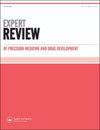翻译基因治疗听力障碍的挑战与进展
IF 1.2
Q4 PHARMACOLOGY & PHARMACY
Expert Review of Precision Medicine and Drug Development
Pub Date : 2020-01-02
DOI:10.1080/23808993.2020.1707077
引用次数: 1
摘要
摘要简介:尽管感觉神经性听力损失(SNHL)是人类最常见的神经退行性疾病,但目前还没有批准的药物干预措施。遗传性和后天性听力损失的进展可以通过将单个基因转移到不同类型的内耳细胞来改变。内耳是基因治疗的一个有吸引力的靶点,因为它的体积小,解剖结构局限,可以通过常规手术进入。涵盖领域:SNHL是一组不同疾病的症状,对治疗干预的时间、靶细胞群、递送系统,当然还有,治疗活性“物质”。专家意见:尽管存在这些挑战(将在下面的论文中讨论),但第一项针对内耳疾病的人类基因治疗临床试验已经启动,这是将实验室的各种治疗方法转化为临床常规的最佳时机。本文章由计算机程序翻译,如有差异,请以英文原文为准。
Challenges and advances in translating gene therapy for hearing disorders
ABSTRACT Introduction: Although sensorineural hearing loss (SNHL) is the most common neurodegenerative disease in humans, no approved pharmaceutical interventions are currently available. The progression of inherited as well as acquired forms of hearing loss can be altered by transferring single genes to distinct cell types of the ear inner. The inner ear is an attractive target for gene therapy given its small size and localized anatomic nature, which is accessible through routine surgical approaches. Areas covered: SNHL is the symptom of a diverse group of disorders with specific requirements regarding the timing of therapeutic intervention, the target cell population, the delivery system and, of course, the therapeutic active “substance’. Expert opinion: Despite these challenges, which will be discussed in the following paper, the first human gene therapy clinical trial for an inner ear disease is already initiated, making this the perfect time to translate a great variety of therapeutic approaches from the laboratory into clinical routine.
求助全文
通过发布文献求助,成功后即可免费获取论文全文。
去求助
来源期刊

Expert Review of Precision Medicine and Drug Development
PHARMACOLOGY & PHARMACY-
CiteScore
2.30
自引率
0.00%
发文量
9
期刊介绍:
Expert Review of Precision Medicine and Drug Development publishes primarily review articles covering the development and clinical application of medicine to be used in a personalized therapy setting; in addition, the journal also publishes original research and commentary-style articles. In an era where medicine is recognizing that a one-size-fits-all approach is not always appropriate, it has become necessary to identify patients responsive to treatments and treat patient populations using a tailored approach. Areas covered include: Development and application of drugs targeted to specific genotypes and populations, as well as advanced diagnostic technologies and significant biomarkers that aid in this. Clinical trials and case studies within personalized therapy and drug development. Screening, prediction and prevention of disease, prediction of adverse events, treatment monitoring, effects of metabolomics and microbiomics on treatment. Secondary population research, genome-wide association studies, disease–gene association studies, personal genome technologies. Ethical and cost–benefit issues, the impact to healthcare and business infrastructure, and regulatory issues.
 求助内容:
求助内容: 应助结果提醒方式:
应助结果提醒方式:


